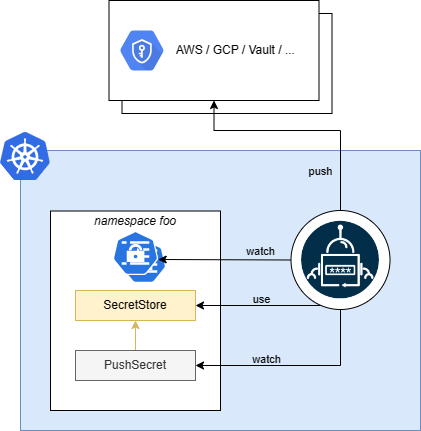mirror of
https://github.com/external-secrets/external-secrets.git
synced 2024-12-14 11:57:59 +00:00
* feat: add templating to PushSecret Signed-off-by: Gergely Brautigam <182850+Skarlso@users.noreply.github.com> * adding unit tests around templating basic concepts and verifying output Signed-off-by: Gergely Brautigam <182850+Skarlso@users.noreply.github.com> * extracting some of the common functions of the parser Signed-off-by: Gergely Brautigam <182850+Skarlso@users.noreply.github.com> * remove some more duplication Signed-off-by: Gergely Brautigam <182850+Skarlso@users.noreply.github.com> * removed commented out code segment Signed-off-by: Gergely Brautigam <182850+Skarlso@users.noreply.github.com> * added documentation for templating feature Signed-off-by: Gergely Brautigam <182850+Skarlso@users.noreply.github.com> * simplified the templating for annotations and labels Signed-off-by: Gergely Brautigam <182850+Skarlso@users.noreply.github.com> --------- Signed-off-by: Gergely Brautigam <182850+Skarlso@users.noreply.github.com>
858 B
858 B
The PushSecret is namespaced and it describes what data should be pushed to the secret provider.
- tells the operator what secrets should be pushed by using
spec.selector. - you can specify what secret keys should be pushed by using
spec.data. - you can also template the resulting property values using templating.
{% include 'full-pushsecret.yaml' %}
Templating
When the controller reconciles the PushSecret it will use the spec.template as a blueprint to construct a new property.
You can use golang templates to define the blueprint and use template functions to transform the defined properties.
You can also pull in ConfigMaps that contain golang-template data using templateFrom.
See advanced templating for details.
